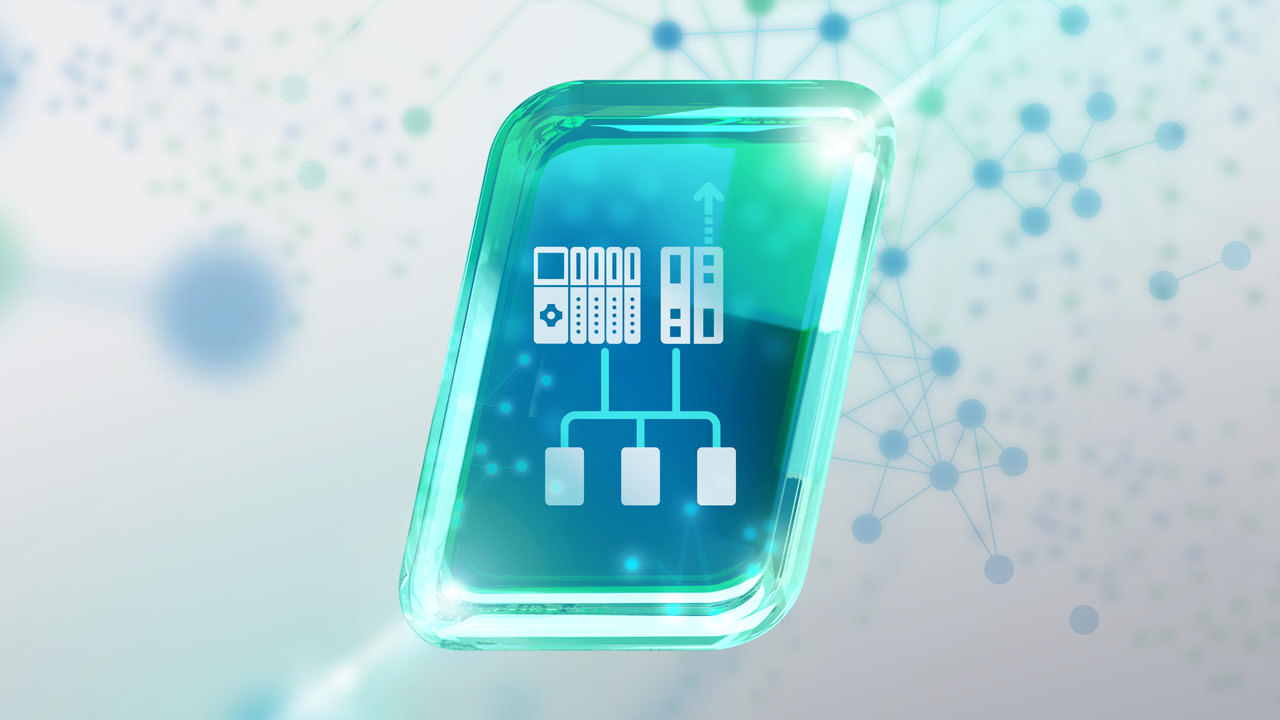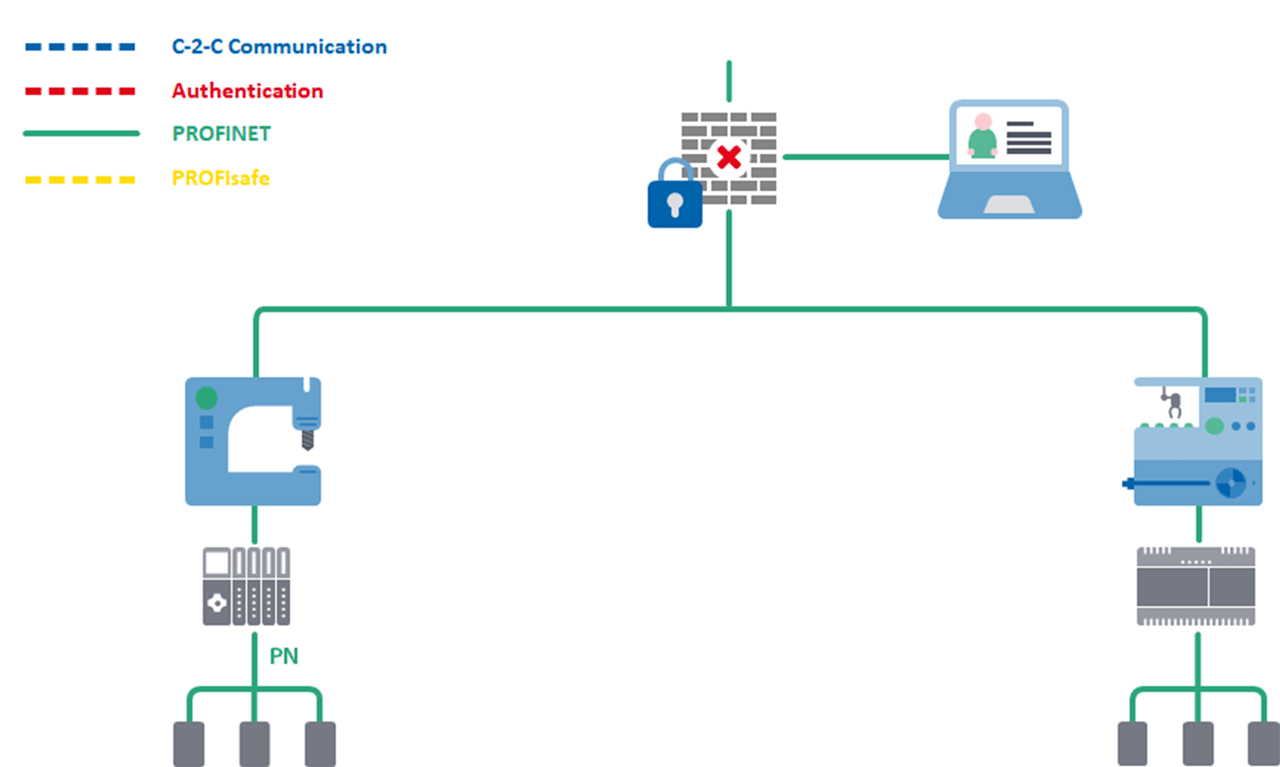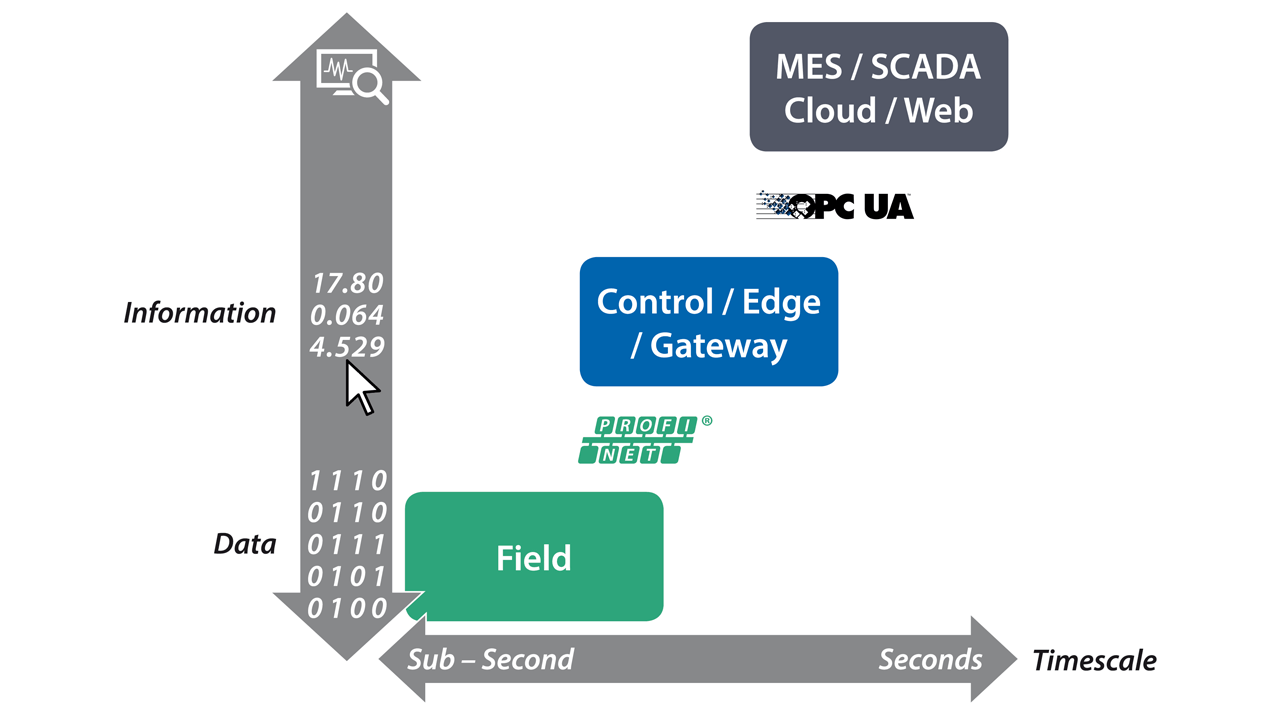TechnologyJuly 15, 2021
PROFINET lays the foundation for modern edge concepts

Besides a traditional controller, there is an increasing need for additional devices or applications for making optimizations. But it’s not always easy to connect quickly and also they can produce data that remains unused. Edge concepts present an interesting approach, and PROFINET technologies can support the process.
Industry 4.0 has inspired many companies to develop their own programs, services, devices or other automation components in order to analyze and better understand their machines and systems. Today, 90 percent of the generated data remains unused because the analysis, integration or processing is too complex or impractical in conventional automation components.
And yet it’s worth taking a closer look at this wealth of data. Besides the actual measured values, it’s possible to identify trends here, such as energy consumption or other long-term diagnostic values that are not typically analyzed in a controller. Due to the data volumes and algorithms, it’s also too complex to integrate diagnostic methods with the aid of artificial intelligence.
And manual work is still required for connecting company-specific software into the existing automation world. “Regular updates are indispensable when it comes to making sure that software, operating systems and security measures are up to date and stable. Many companies have a hard time with this, if they are honest with themselves,” said Karsten Schneider, PI Chairman.
“At the same time, of course, companies want to offer their customers new, intelligent digital products and services. But the effort involved in processing data at the field level can be immense – not to mention issues such as scalability and security,” he added.

New machine concepts using edge computing and integrating PROFINET and PROFIsafe networking technology.
Key factors in vertical integration
At the same time, the path to a new technology is always a dynamic process. To present just one example here, five years ago it was considered a good solution to direct as much data as possible to the cloud, where it would then be processed.
In the meantime, however, users have realized that it makes sense to process at least part of the data closer to the source – namely, on the edge of the network – due, for example, to latency or bandwidth considerations.
This is where edge components come into play, serving as key factors for vertical integration. They transform additional production data into usable information. It is less important whether this involves existing devices in the network that have edge functions, or devices that were added later.
The biggest advantage is that edge components make it possible for data to be processed almost in real time, directly at the source, with a minimum of network traffic. This is also appealing when it comes to data sovereignty. All data remains in the company, and the user decides whether the data should be passed along or not. In any event, it is intended to make life easier for the user or to organize production more efficiently.
New paths with less effort
The major advantage of edge solutions is that they don’t require sophisticated reprogramming or updates to the actual automation solution. And they are generally less expensive than a PLC. “The integration of processing capacity on an edge functions much like the apps on our phones – but in secure mode, of course, and in a manner that is suitable for industrial use,” explained Schneider.
But there are also other applications in which edge approaches demonstrate their advantages. For example, data is sometimes needed in another form and must be preprocessed in order to standardize raw values or calculate mean values. Or it can happen that, when starting operations, the PLC or other function is not yet available, and yet data is still needed from various devices. Edge concepts are able to work without an PLC, for the start.
“Likewise, it can be necessary to virtually load additional functions during the course of operations, similarly to how we do it with apps,” added Schneider.
In some cases, it may also be necessary for the data collection not to strain the resources of a PLC. “Many controllers often just need a yes/no decision. But usually there is additional useful data available, which is easy to analyze separately by means of an edge application. This could include long-term diagnostic or maintenance data, for example,” said Schneider.
“Even if different proprietary communication protocols are used or you need a central location for data, network devices and security configuration, it makes sense to use an edge approach as a data hub,” he added.
It’s also possible to preprocess data in the edge and then transfer the data to a cloud. This can be done to have access to larger computer capacities or to avoid a continuous strain on the cloud connection. Sometimes a lot of data is collected over an extended period of time in order to facilitate a more detailed analysis.
Edge components don’t always have to be viewed separately. They can also be integrated directly next to the controller. Close cooperation between the systems can even be advantageous if an analysis of the data requires close congruence to the condition of the control program or the machine.

OPC UA in PROFINET Controller or Edge-Gateway.
Structure to the flood of data
And yet we shouldn’t underestimate the need for functioning, secure and fast communication. Each of these edge applications requires data, and not just any data.
The data must be usable and applicable. The data is typically already stored, either as data records that have already been standardized by PROFINET, or as optional additional manufacturer- or device-specific data records. “If I don’t know the context, the data is of no use to me,” said Schneider.
The increasing number of data sources makes it necessary to have standardized information models. And this is where the PROFINET technologies come into play. They are easy to integrate into existing higher-level enterprise systems, including MES and ERP systems (manufacturing execution systems and enterprise resource planning systems).
Data from the automation network can be made available in real time from almost anywhere in the company.
“At PROFINET, we started focusing on modularity and continuity 20 years ago. And the issue of semantics has always been high on our agenda. This is especially beneficial to us now, because we know how to standardize data,” Schneider explained. He cited identification and maintenance data as typical examples here, along with various profiles such as PROFIdrive or the PA profile, which are already processed in PROFINET in a way that allows them to be used by other devices. “These properties will be even more important in the future,” Schneider said.
The big advantage for device manufacturers is that they don’t really need to do anything if their customers use edge concepts, since PROFINET is already standardized. The implementation is also quite simple; after all, the culling of the data has been defined through the PROFINET services since the very beginning, meaning it’s included in the corresponding technology packages.
And how does it work in practice? Thanks to PROFINET and OPC UA, every edge component can be integrated. The data mapping typically takes place with the help of OPC UA’s object modeling capabilities, either with one’s own specifications or combined in accordance with relevant standardized OPC UA companion specifications, such as the OPC UA for PROFINET. Here, data that is collected from PROFINET devices in real time is aggregated and analyzed. The data is preprocessed on the spot, without interrupting the actual processing. If the available PLC doesn’t support OPC UA, external edge gateways can be used instead. This is implemented, for example, in process automation when using the NAMUR open architecture (NOA) concept.
Meanwhile, there are edge applications with PROFINET, and the infrastructure is continuing to be built up. “PROFINET already possesses a high degree of standardization – for instance, relating to I&M data or diagnostic formats. The application profiles are also helpful. We have a lot of experience in this area,” says Schneider, citing just one of many examples. Additionally, PROFINET ensures parallelism which means multiple devices can be accessed simultaneously, besides the controller.
A final advantage is that PROFINET networks enable edge devices to directly access OPC or TCP/IP devices. Since OPC UA has established itself as the de facto standard for the interoperable exchange of information from the workshop to the highest level (vertical communication), this is the most efficient way to move semantic information within a system. This is a perfect fit for PROFINET, given its ability to operate various protocols independently of one another in the same Ethernet network.
The journey from here
Edge computing not only allows for the easier diagnosis of errors; it also facilitates new business models. One possibility here is payment systems between machines, for example. Up to now, the focus has been only on the data that a device provides. But what about the additional information that could also be of value? Would it not be possible to develop a business model for using this additional data – essentially a microeconomy at shop-floor level? Even for such scenarios, a good system of data collection and analysis is the crucial foundation.
Edge computing serves as a bridge between automation and cloud computing. Since the industry is constantly changing, technologies must remain flexible. That’s why there will not be just one technology in the future; rather, users will select the one that is most viable for their purposes – be it edge, controller and/or cloud technology. The most important aspect will surely continue to be that of security, which will be implemented either in the edge itself or on the next-higher level.
A greater focus will be placed on the principle of “security by design” in order to cover all security aspects from the very start. PI will support its users along the way, regardless of which solution they choose. Independently of how the issue continues to develop, PROFINET’s basic architecture (with parallel data traffic) and the high standardization of data is a necessary and solid foundation, thus ensuring the sustainability of systems and production processes.
Xaver Schmidt, Head of the Working Group I4.0, PI (PROFIBUS & PROFINET International.


